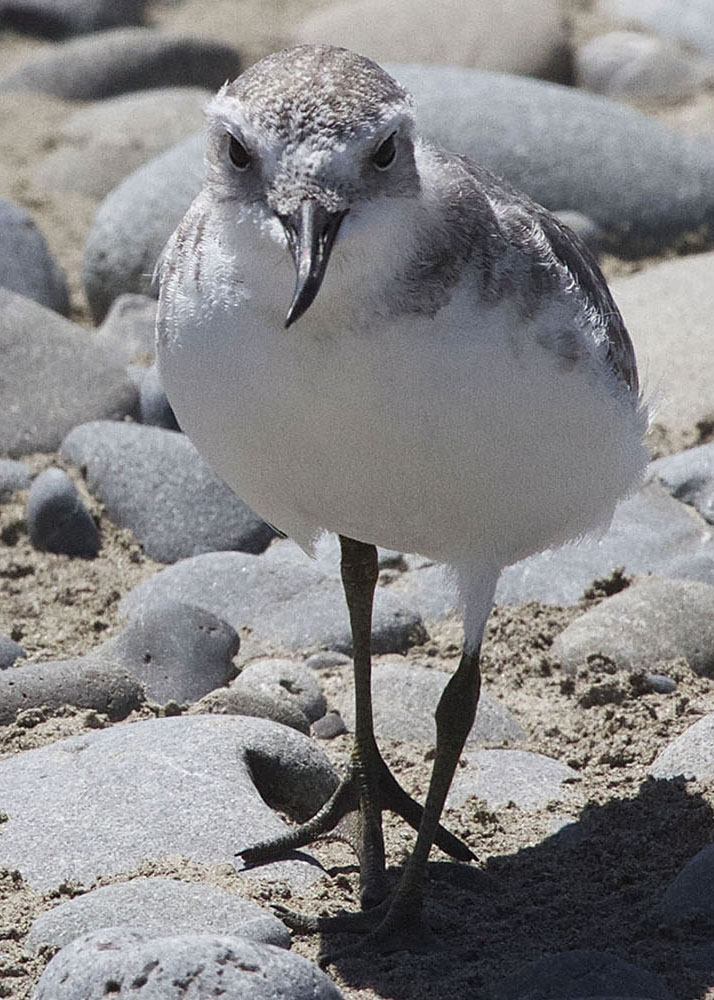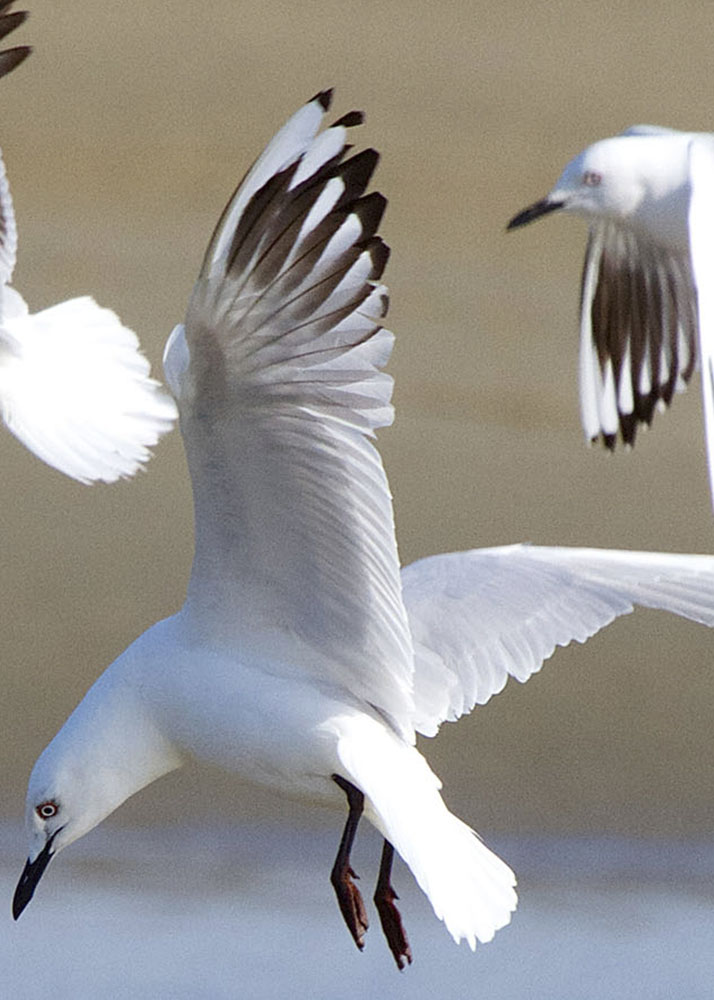Braided river ecosystems
Because braided rivers are globally rare, their braidplain ecologies are equally rare biodiversity hotspots. The life in them is highly specialised, the ecological relationships complicated by the fact that braided rivers stretch from the highest peaks in the mountains to the coast. Some rivers, like the Tasman and Makarora, travel just a short distance to end in glacial or alpine lakes.
Others travel through alpine tussock lands, forests, dairy and sheep farms, exotic tree plantations and vineyards, narrow gorges of ancient Torlesse greywacke and not quite as ancient limestone filled with a menagerie of prehistoric fossils, through coastal plains, beside roads, through towns and cities, coastal wetlands and dunes until finally reaching the sea.
A huge variety of birds, fish, reptiles, invertebrates, plants, lichens, mosses, and fungi, have adapted to thrive in these challenging and incredibly dynamic environments defined by channels of water weaving between temporary islands of gravel. And each of them are dependent on one another (Video 1).
In recognition of their importance and value, braided rivers are the only ecosystem to have its own set of targets in the Canterbury Water Management Strategy (CWMS). Yet in spite of the resilience of life in and around these rivers, many species, indeed entire braided river habitats are under threat (Video 2).
A unique evolution
“New Zealand is as close as we will get to the opportunity to study life on another planet.” – Jared Diamond
Elsewhere in the world, most species are threatened by pollution and habitat loss. The situation in New Zealand is further complicated because of our unique and relatively isolated evolution, for here the ghosts of the supercontinent, Gondwana still roam.
New Zealand – Aotearoa sits on what has been described as the ‘seventh continent’ of Zealandia, a mass of continental crust that stretched and sank beneath the ocean after breaking away from Gondwana some 85-130 million years ago. Living fossils such as the tuatara and Archey’s frog, creatures that pre-date the dinosaurs, are evidence that at least some parts of Zealandia have remained above the surface of the ocean ever since.
Isolated from other landmasses, over millions of years these ghosts of Gondwana were joined by a few hardy creatures carried by waves and winds from Australia, South America, the Pacific Islands, and (once largely ice-free) Antarctica.
Elsewhere, the demise of the dinosaurs heralded the rise of mammals. Not so in New Zealand. Here, ecological niches were instead filled with birds, three tiny insectivorous and fruit-eating bats, and invertebrates.
Their evolution was a product of turbulent and often violent change. Around 40 million years ago, the tectonic forces that once stretched Zealandia began to change direction. Parts of Zealandia were pushed together along the Alpine Fault. Since then, a staggering 20 kilometres-thick section of the Earth’s crust has been thrust upwards. In the warm wet world of Miocene, rainfall eroded the mountains, what we now call the Southern Alps – Kä Tiritiri o te Moana, almost as fast as they grew. Glaciers came and went; carving out valleys along which flowed braided rivers that deposited the eroded material to form wide plains.
When humans arrived, these globally rare ecosystems were disrupted for reasons explained here and extinctions soon followed.
Today, on the plains away from the coast, despite having received little protection, only the braided rivers still have what little remains of our extraordinary history.
While more than 80 species of birds are found along braided rivers, a rare handful have adapted to breed almost exclusively in this dynamic and ever-changing environment. Less obvious but equally integral to these ecosystems are the native reptiles, invertebrates, fish, and plants. But their populations are declining, fast. Several species are at now at risk of extinction for reasons outlined in threats.
Endemic or native: what's the difference?
Endemic: found ONLY in New Zealand, nowhere else in the world. If they become exitinct here, they’re gone forever.
Native: native of New Zealand but also found elsewhere. This applies to many migratory birds.
New Zealand threat classification
Video 2
Download as a PDF: Change in threat status of riverine birds
The New Zealand threat classification system outlines what animals and plants are placed into these categories and why. Each section is updated every few years. The current edition is 2021.
To place it in context Nationally Endangered means two stops to extinction. Nationally critical means next stop – extinction.
Black-fronted terns, for example, are Nationally Critical – just one step from extinction. They don’t receive the same attention as iconic species like kiwis, and yet they are far more likely to vanish forever unless measures are taken, and taken very soon, to reverse this trend. Declining is an early warning alarm, signalling something is wrong.
Many birds and other species such as the white-fronted tern and black-billed gull are long-lived. While the total number of birds might appear to be reasonably high, if too few chicks reach adulthood to be recruited into the future breeding population, once older adults reach the end of their lifespan, the population can drop catastrophically. This appears to be the happening with several bird species.
Further information & references
Specific research and references for individual species are found on their respective pages. Below is a general reference list.
- 2024: Harris et al; Multiscale ecological resilience in braided rivers, CH8 in Resilience and Riverine Landscapes, First Edition, 2024
- 2023: Meredith; The ecology and fish populations of Canterbury’s braided rivers: Past, Present and Future? Braided Rivers 2023 seminar paper
- 2021: Meredith; Important features of the “wet” part of braided rivers – important habitats of fishes, invertebrates and algae, Braided Rivers 2021 seminar paper
- 2021 Mayence; Incorporating food web research into a braided river adaptive management project: overview of the next five years on the Waiau Toa/Clarence River Braided Rivers 2021 seminar paper
- 2020: McCarthur et al., State and trends in the abundance and distribution of riverbed-nesting shorebirds on the Tutaekuri, Ngaruroro and Tukituki Rivers, Client report prepared for Hawke’s Bay Regional Council, Napier
- 2020: McCarthur; A review of significant coastal and freshwater habitats for indigenous birds in the Wellington region, report prepared for Greater Wellington Regional Council
- 2020: McCarthur; A review of the shorebird values and management actions in Hawke’s Bay Regional Council’s Ecological Management and Enhancement Plans
- 2020: McCarthur; A review of the status and management of banded dotterels (Charadrius bicinctus) on Ōnoke Spit, Client report prepared for the Department of Conservation, Masterton.
- 2019: (ECan) Pompei, Grove & Cuff; Monitoring extent of available habitat for indigenous braided river birds in Canterbury – a 2012 Baseline
- 2019 (DOC): Management and Research Priorities: terrestrial invertebrates, lizards, terrestrial native plants, terrestrial weed invasions, and geomorphology, wetlands, river mouths and estuaries
- DOC (dates vary): New Zealand Threat Classification System
- DOC catalogue of scientific publications: enter the relevant search terms in the ‘search’ dialogue box. You may need to vary your search, for example ‘black stilt’ gives far more results than ‘kaki’ or ‘kakī’
- 2018 (Victoria University): Plate tectonics of Zealandia (Youtube)
- 2017 (DOC): Maloney; Opportunities and priorities for future braided river conservation (BRaid seminar)
- 2017 (DOC) O’Donnell; Values and management of lowland braided rivers for birds (BRaid seminar)
- 2017 (DOC) Hughey: Keynote address: Local, regional, national and international aspects of braided river management (BRaid seminar)
- 2016: BRaid; Teaching resources (PDF)
- 2016: BRaid; Teaching resources (iPad)
- 2016: Forest & Bird; Important Bird Areas on Braided Rivers – links to list of 3 to 7 page PDF files, by river name. These were extracted from…
- 2016: Forest & Bird; 177-page 20Mb file on Important Bird Areas for all rivers, lakes, and coastal areas
- 2016 (DOC) Hughey: Modelling how river flows influence feeding and breeding habitat of riverbed birds (BRaid workshop)
- 2016 (DOC): O’Donnell et al; Management and Research Priorities for New Zealand Braided Rivers
- 2016: Waters & Grosser; Managing shifting species: Ancient DNA reveals conservation conundrums in a dynamic world BioEssays 38(11) · September 2016
- 2014: Sciblogs; What happened after trout were introduced into NZ streams? Food webs: who eats who, and what does that tell us?
- 2009: Hughey et al; Birdlife: Application of the river significance assessment method to the Canterbury region
- 2007: DOC; Braided River Ecology: a literature review of physical habitats and aquatic invertebrate communities
- 2006: DOC; Habitat networks of indigenous shorebirds in New Zealand, SCIENCE FOR CONSERVATION 261
- DOC brochure: Life on a Braided River
- DOC poster: Life on a Braided River
- NIWA: Freshwater and Estuaries includes research projects and management tools
- New Zealand Freshwater Sciences Society
- New Zealand Journal of Ecology: catalogue of publications: enter names or journal author
- New Zealand Birds Online: bird search database
- Nortonis (Birds New Zealand publication): journal search database
- 1990: Diamond; New Zealand as an archipelago: an international perspective (in) Ecological restoration of New Zealand islands (2010) Conservation Science Publication No. 2, Department of Conservation


